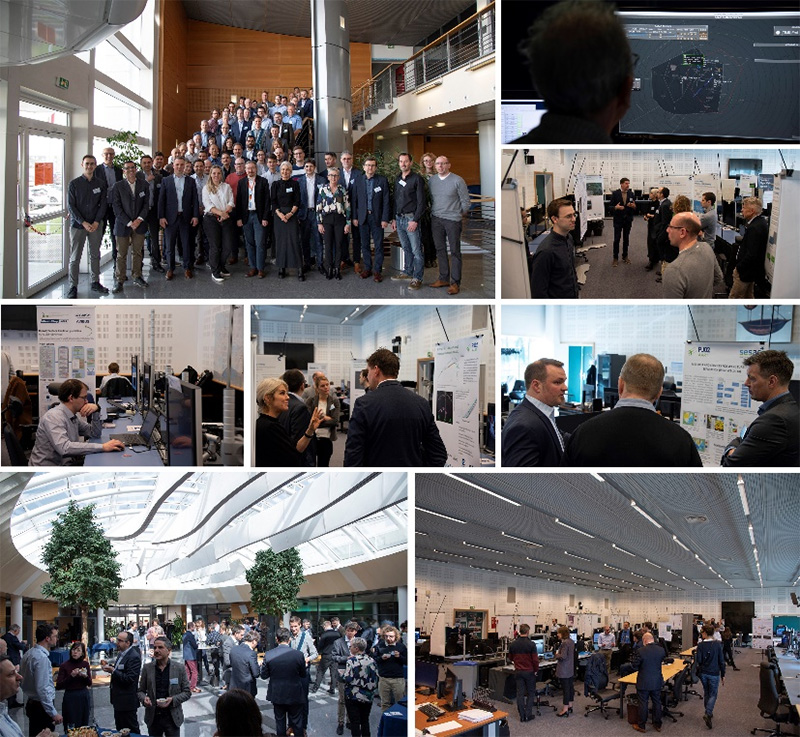A total of 32 solutions supporting more efficient, resilient, accessible, and greener airport airside operations are now ready for take-off, thanks to the work of the SESAR Airside, Airport and Runway Throughput project (AART PJ.02 Wave 2). Partners gathered on 28-29 March in Brétigny, France to showcase the work of the project and the range of solutions available to improve the efficiency of traffic throughput at airports across Europe.
Organised by project coordinator EUROCONTROL, together with SESAR 3 Joint Undertaking partners, visitors had the chance to attend demos and interactive presentations on all 32 solutions developed under the PJ.02 project. The various solutions aim to deliver tangible operational and technical improvements to infrastructure that can increase traffic throughput, while simultaneously factoring in environmental considerations and preserving safety.
SESAR 3 JU Programme Manager, Jérôme Delmeulle commented on the success of the project; “PJ02-W2 was one of the largest projects in SESAR 2020. The project’s final event was a unique opportunity to see the results of all the solutions that had been conducted over the last three years. With more than 30 SESAR solutions presented in such an interactive way allowed us and all the stakeholders to understand the excellent progress made toward more efficient, more resilient, more accessible, and greener airport airside operations.”
The 32 independently deployable solutions provide improvements related to human, technical, procedural and performance issues. Solutions include advanced GNSS processes to increase terminal manoeuvring area efficiency during arrival and departure operations and improved separation minima for enhanced runway throughput. Alternative ground surveillance, as well as enhanced flight vision systems were also delivered, offering improved access to secondary airports in low-visibility conditions. Furthermore, solutions applied digital technologies to ameliorate tactical conflict management in the taxi phase and increased safety by synchronising air-ground information sharing to avoid runway excursions.

